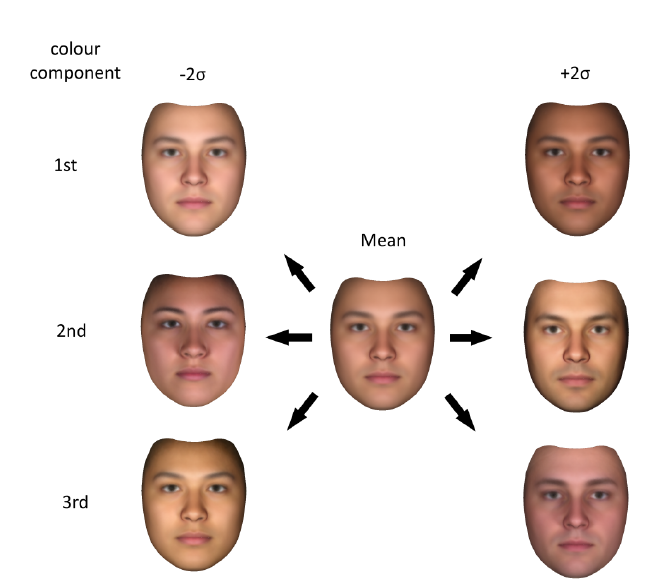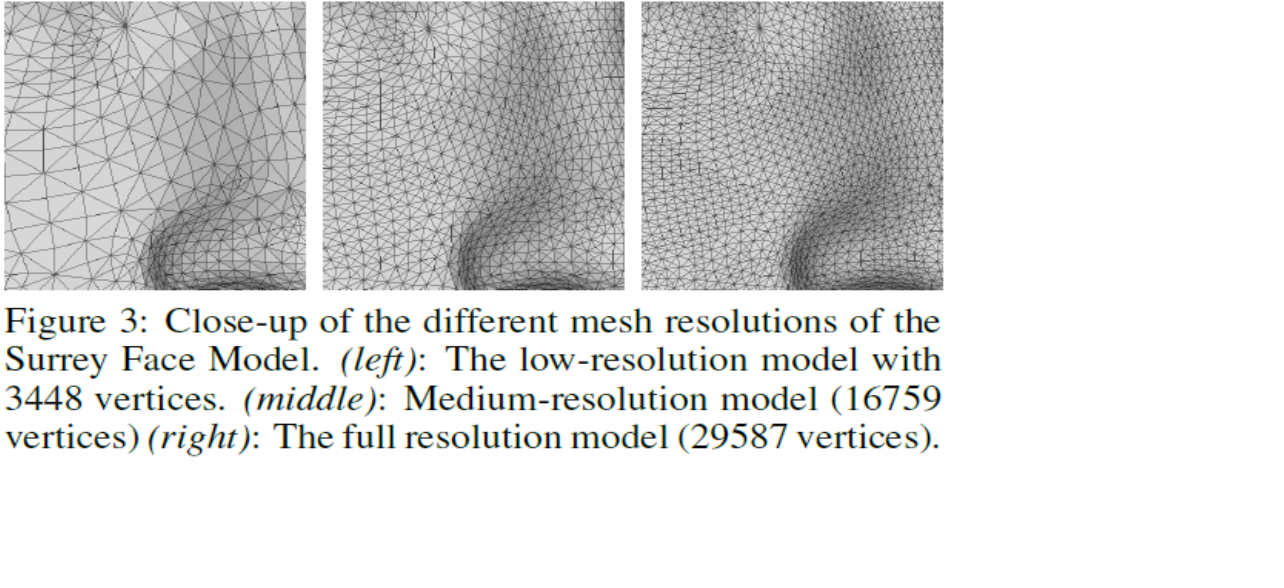Description:
3D Morphable Face Model

n A principal component analysis (PCA) representation of a collection of 3D face images
n Applicable to:
n Pose and illumination correction of 2D face input images for face recognition
n Synthesizing 2D faces in new poses and illumination conditions
n Creating digital doubles
n Reconstructing 3D faces from video
Paper:
Website:
Blog:
3D face modelling using a 3D morphable model
3D Morphable Models are used for face analysis because the intrinsic properties of 3D faces provide a representation that is immune to intra-personal variations such as pose and illumination. Given a single facial input image, a 3DMM can recover 3D face (shape and texture) and scene properties (pose and illumination) via a fitting process.
The Surrey 3D face models
Each of our face models is created from a set of 3D face scans. Each scan is in the form of a graph, where the vertices are locations on the surface of the face, and the edges connect the vertices to form a triangulated mesh. Each vertex also has a colour; hence the vertices define both the shape and the texture of a face. Each face is registered to a standard mesh, so that each vertex has the same location on any registered face.
The model has two components: (i) a mesh consisting of the mean face, and (ii) two matrices, one each for shape and texture that describe the various modes of variations from the mean. The number of modes of variation depends on the size of the mesh, and also is different for shape and texture. Hence the appearance of a given face can be summarised by a set of coefficients that describe how much there is of each mode of variation.
Distinguished Professor Joseph Kittler
Leading specialist in pattern recognition and machine intelligence.
Josef Kittler received his B.A. in Electrical Engineering (1971), PhD in Pattern Recognition (1974), and ScD (1992), all from University of Cambridge. He joined Surrey University in 1986 and became Distinguished Professor in 2004.
He founded Centre for Vision, Speech and Signal Processing (CVSSP) in 1986 at University of Surrey[1] and served as President of the International Association for Pattern Recognition during 1994–1996. He is Series Editor of Springer Lecture Notes in Computer Science.
Awards:
IAPR Fellow (1998).
"For contributions to computer vision and pattern recognition, and for outstanding leadership in IAPR".
IEE/IET Fellow (1999).
IET fellowship honours those who "Lead by example. Inspire the next generation. Help to shape the profession."
FREng (2000).
Royal Academy of Engineering Fellows represent "the nation's best engineering researchers, innovators, entrepreneurs, business and industry leaders."[7]
KS Fu Prize (2006).
This biennial prize is given to a living person "in recognition of an outstanding technical contribution to the field of pattern recognition".
IET Faraday Medal (2008).
The most prestigious of the IET Achievement Medals.
EURASIP Fellow (2009).
"For contributions to pattern recognition, image processing and computer vision".
